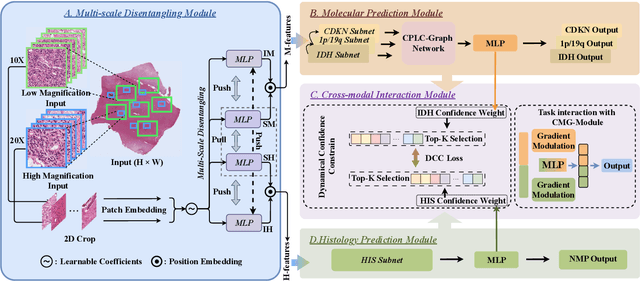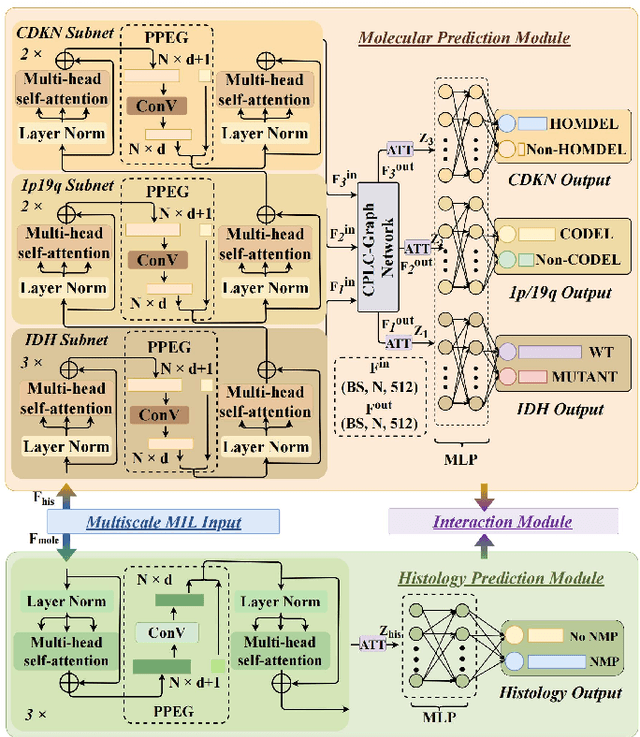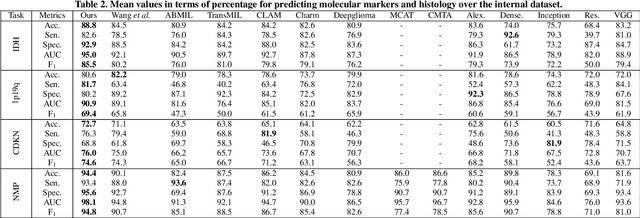Hanyu Liu
Generative AI Meets Wireless Sensing: Towards Wireless Foundation Model
Sep 18, 2025



Abstract:Generative Artificial Intelligence (GenAI) has made significant advancements in fields such as computer vision (CV) and natural language processing (NLP), demonstrating its capability to synthesize high-fidelity data and improve generalization. Recently, there has been growing interest in integrating GenAI into wireless sensing systems. By leveraging generative techniques such as data augmentation, domain adaptation, and denoising, wireless sensing applications, including device localization, human activity recognition, and environmental monitoring, can be significantly improved. This survey investigates the convergence of GenAI and wireless sensing from two complementary perspectives. First, we explore how GenAI can be integrated into wireless sensing pipelines, focusing on two modes of integration: as a plugin to augment task-specific models and as a solver to directly address sensing tasks. Second, we analyze the characteristics of mainstream generative models, such as Generative Adversarial Networks (GANs), Variational Autoencoders (VAEs), and diffusion models, and discuss their applicability and unique advantages across various wireless sensing tasks. We further identify key challenges in applying GenAI to wireless sensing and outline a future direction toward a wireless foundation model: a unified, pre-trained design capable of scalable, adaptable, and efficient signal understanding across diverse sensing tasks.
RoboMatch: A Mobile-Manipulation Teleoperation Platform with Auto-Matching Network Architecture for Long-Horizon Manipulation
Sep 10, 2025



Abstract:This paper presents RoboMatch, a novel unified teleoperation platform for mobile manipulation with an auto-matching network architecture, designed to tackle long-horizon tasks in dynamic environments. Our system enhances teleoperation performance, data collection efficiency, task accuracy, and operational stability. The core of RoboMatch is a cockpit-style control interface that enables synchronous operation of the mobile base and dual arms, significantly improving control precision and data collection. Moreover, we introduce the Proprioceptive-Visual Enhanced Diffusion Policy (PVE-DP), which leverages Discrete Wavelet Transform (DWT) for multi-scale visual feature extraction and integrates high-precision IMUs at the end-effector to enrich proprioceptive feedback, substantially boosting fine manipulation performance. Furthermore, we propose an Auto-Matching Network (AMN) architecture that decomposes long-horizon tasks into logical sequences and dynamically assigns lightweight pre-trained models for distributed inference. Experimental results demonstrate that our approach improves data collection efficiency by over 20%, increases task success rates by 20-30% with PVE-DP, and enhances long-horizon inference performance by approximately 40% with AMN, offering a robust solution for complex manipulation tasks.
HaDM-ST: Histology-Assisted Differential Modeling for Spatial Transcriptomics Generation
Aug 10, 2025Abstract:Spatial transcriptomics (ST) reveals spatial heterogeneity of gene expression, yet its resolution is limited by current platforms. Recent methods enhance resolution via H&E-stained histology, but three major challenges persist: (1) isolating expression-relevant features from visually complex H&E images; (2) achieving spatially precise multimodal alignment in diffusion-based frameworks; and (3) modeling gene-specific variation across expression channels. We propose HaDM-ST (Histology-assisted Differential Modeling for ST Generation), a high-resolution ST generation framework conditioned on H&E images and low-resolution ST. HaDM-ST includes: (i) a semantic distillation network to extract predictive cues from H&E; (ii) a spatial alignment module enforcing pixel-wise correspondence with low-resolution ST; and (iii) a channel-aware adversarial learner for fine-grained gene-level modeling. Experiments on 200 genes across diverse tissues and species show HaDM-ST consistently outperforms prior methods, enhancing spatial fidelity and gene-level coherence in high-resolution ST predictions.
Confidence-driven Gradient Modulation for Multimodal Human Activity Recognition: A Dynamic Contrastive Dual-Path Learning Approach
Jul 03, 2025Abstract:Sensor-based Human Activity Recognition (HAR) is a core technology that enables intelligent systems to perceive and interact with their environment. However, multimodal HAR systems still encounter key challenges, such as difficulties in cross-modal feature alignment and imbalanced modality contributions. To address these issues, we propose a novel framework called the Dynamic Contrastive Dual-Path Network (DCDP-HAR). The framework comprises three key components. First, a dual-path feature extraction architecture is employed, where ResNet and DenseNet branches collaboratively process multimodal sensor data. Second, a multi-stage contrastive learning mechanism is introduced to achieve progressive alignment from local perception to semantic abstraction. Third, we present a confidence-driven gradient modulation strategy that dynamically monitors and adjusts the learning intensity of each modality branch during backpropagation, effectively alleviating modality competition. In addition, a momentum-based gradient accumulation strategy is adopted to enhance training stability. We conduct ablation studies to validate the effectiveness of each component and perform extensive comparative experiments on four public benchmark datasets.
USAD: An Unsupervised Data Augmentation Spatio-Temporal Attention Diffusion Network
Jul 03, 2025Abstract:The primary objective of human activity recognition (HAR) is to infer ongoing human actions from sensor data, a task that finds broad applications in health monitoring, safety protection, and sports analysis. Despite proliferating research, HAR still faces key challenges, including the scarcity of labeled samples for rare activities, insufficient extraction of high-level features, and suboptimal model performance on lightweight devices. To address these issues, this paper proposes a comprehensive optimization approach centered on multi-attention interaction mechanisms. First, an unsupervised, statistics-guided diffusion model is employed to perform data augmentation, thereby alleviating the problems of labeled data scarcity and severe class imbalance. Second, a multi-branch spatio-temporal interaction network is designed, which captures multi-scale features of sequential data through parallel residual branches with 3*3, 5*5, and 7*7 convolutional kernels. Simultaneously, temporal attention mechanisms are incorporated to identify critical time points, while spatial attention enhances inter-sensor interactions. A cross-branch feature fusion unit is further introduced to improve the overall feature representation capability. Finally, an adaptive multi-loss function fusion strategy is integrated, allowing for dynamic adjustment of loss weights and overall model optimization. Experimental results on three public datasets, WISDM, PAMAP2, and OPPORTUNITY, demonstrate that the proposed unsupervised data augmentation spatio-temporal attention diffusion network (USAD) achieves accuracies of 98.84%, 93.81%, and 80.92% respectively, significantly outperforming existing approaches. Furthermore, practical deployment on embedded devices verifies the efficiency and feasibility of the proposed method.
Enhancing the Efficiency of Complex Systems Crystal Structure Prediction by Active Learning Guided Machine Learning Potential
May 13, 2025Abstract:Understanding multicomponent complex material systems is essential for design of advanced materials for a wide range of technological applications. While state-of-the-art crystal structure prediction (CSP) methods effectively identify new structures and assess phase stability, they face fundamental limitations when applied to complex systems. This challenge stems from the combinatorial explosion of atomic configurations and the vast stoichiometric space, both of which contribute to computational demands that rapidly exceed practical feasibility. In this work, we propose a flexible and automated workflow to build a highly generalizable and data-efficient machine learning potential (MLP), effectively unlocking the full potential of CSP algorithms. The workflow is validated on both Mg-Ca-H ternary and Be-P-N-O quaternary systems, demonstrating substantial machine learning acceleration in high-throughput structural optimization and enabling the efficient identification of promising compounds. These results underscore the effectiveness of our approach in exploring complex material systems and accelerating the discovery of new multicomponent materials.
Redundant feature screening method for human activity recognition based on attention purification mechanism
Mar 30, 2025Abstract:In the field of sensor-based Human Activity Recognition (HAR), deep neural networks provide advanced technical support. Many studies have proven that recognition accuracy can be improved by increasing the depth or width of the network. However, for wearable devices, the balance between network performance and resource consumption is crucial. With minimum resource consumption as the basic principle, we propose a universal attention feature purification mechanism, called MSAP, which is suitable for multi-scale networks. The mechanism effectively solves the feature redundancy caused by the superposition of multi-scale features by means of inter-scale attention screening and connection method. In addition, we have designed a network correction module that integrates seamlessly between layers of individual network modules to mitigate inherent problems in deep networks. We also built an embedded deployment system that is in line with the current level of wearable technology to test the practical feasibility of the HAR model, and further prove the efficiency of the method. Extensive experiments on four public datasets show that the proposed method model effectively reduces redundant features in filtered data and provides excellent performance with little resource consumption.
CMD-HAR: Cross-Modal Disentanglement for Wearable Human Activity Recognition
Mar 27, 2025Abstract:Human Activity Recognition (HAR) is a fundamental technology for numerous human - centered intelligent applications. Although deep learning methods have been utilized to accelerate feature extraction, issues such as multimodal data mixing, activity heterogeneity, and complex model deployment remain largely unresolved. The aim of this paper is to address issues such as multimodal data mixing, activity heterogeneity, and complex model deployment in sensor-based human activity recognition. We propose a spatiotemporal attention modal decomposition alignment fusion strategy to tackle the problem of the mixed distribution of sensor data. Key discriminative features of activities are captured through cross-modal spatio-temporal disentangled representation, and gradient modulation is combined to alleviate data heterogeneity. In addition, a wearable deployment simulation system is constructed. We conducted experiments on a large number of public datasets, demonstrating the effectiveness of the model.
Joint Modelling Histology and Molecular Markers for Cancer Classification
Feb 11, 2025



Abstract:Cancers are characterized by remarkable heterogeneity and diverse prognosis. Accurate cancer classification is essential for patient stratification and clinical decision-making. Although digital pathology has been advancing cancer diagnosis and prognosis, the paradigm in cancer pathology has shifted from purely relying on histology features to incorporating molecular markers. There is an urgent need for digital pathology methods to meet the needs of the new paradigm. We introduce a novel digital pathology approach to jointly predict molecular markers and histology features and model their interactions for cancer classification. Firstly, to mitigate the challenge of cross-magnification information propagation, we propose a multi-scale disentangling module, enabling the extraction of multi-scale features from high-magnification (cellular-level) to low-magnification (tissue-level) whole slide images. Further, based on the multi-scale features, we propose an attention-based hierarchical multi-task multi-instance learning framework to simultaneously predict histology and molecular markers. Moreover, we propose a co-occurrence probability-based label correlation graph network to model the co-occurrence of molecular markers. Lastly, we design a cross-modal interaction module with the dynamic confidence constrain loss and a cross-modal gradient modulation strategy, to model the interactions of histology and molecular markers. Our experiments demonstrate that our method outperforms other state-of-the-art methods in classifying glioma, histology features and molecular markers. Our method promises to promote precise oncology with the potential to advance biomedical research and clinical applications. The code is available at https://github.com/LHY1007/M3C2
Expanding Scope: Adapting English Adversarial Attacks to Chinese
Jun 08, 2023



Abstract:Recent studies have revealed that NLP predictive models are vulnerable to adversarial attacks. Most existing studies focused on designing attacks to evaluate the robustness of NLP models in the English language alone. Literature has seen an increasing need for NLP solutions for other languages. We, therefore, ask one natural question: whether state-of-the-art (SOTA) attack methods generalize to other languages. This paper investigates how to adapt SOTA adversarial attack algorithms in English to the Chinese language. Our experiments show that attack methods previously applied to English NLP can generate high-quality adversarial examples in Chinese when combined with proper text segmentation and linguistic constraints. In addition, we demonstrate that the generated adversarial examples can achieve high fluency and semantic consistency by focusing on the Chinese language's morphology and phonology, which in turn can be used to improve the adversarial robustness of Chinese NLP models.
 Add to Chrome
Add to Chrome Add to Firefox
Add to Firefox Add to Edge
Add to Edge